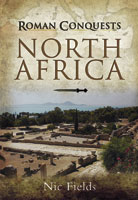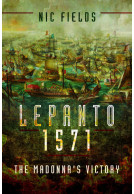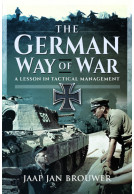God's City (Hardback)
Byzantine Constantinople
Imprint: Pen & Sword Military
Pages: 289
Illustrations: 20
ISBN: 9781473895089
Published: 20th November 2017
(click here for international delivery rates)
Order within the next 1 hour, 46 minutes to get your order processed the next working day!
Need a currency converter? Check XE.com for live rates
| Other formats available - Buy the Hardback and get the eBook for free! | Price |
|---|---|
| God's City ePub (32.5 MB) Add to Basket | £6.99 |
Byzantium. Was it Greek or Roman, familiar or hybrid, barbaric or civilised, Oriental or Western? In the late eleventh century Constantinople was the largest and wealthiest city in Christendom, the seat of the Byzantine emperor, Christ’s vice-regent on earth, and the centre of a predominately Christian empire, steeped in Greek cultural and artistic influences, yet founded and maintained by a Roman legal and administrative system. Despite the amalgam of Greek and Roman influences, however, its language and culture was definitely Greek. Constantinople truly was the capital of the Roman empire in the East, and from its founding under the first Constantinus to its fall under the eleventh and last Constantinus the inhabitants always called themselves Romaioi, Romans, not Hellênikés, Greeks. Over its millennium long history the empire and its capital experienced many vicissitudes that included several periods of waxing and waning and more than one ‘golden age’.
Its political will to survive is still eloquently proclaimed in the monumental double land walls of Constantinople, the greatest city fortifications ever built, on which the forces of ‘barbarism’ dashed themselves for a thousand years. Indeed, Byzantium was one of the longest lasting social organisations in history. Very much part of this success story was the legendary Varangian Guard, the élite body of axe-bearing Northmen sworn to remain loyal to the true Christian emperor of the Romans. There was no hope for an empire that had lost the will to prosecute the grand and awful business of adventure. The Byzantine empire was certainly not of that stamp.
God’s City brims with intellectual strength and rigorous scholarship. It takes the reader along on the 1000-year voyage from Constantinople’s creation, to the construction of its massive walls and to its fall in 1453 – more precisely to the massive cannons employed by the Ottoman Sultan Mehmet II’s army.
Mir Bahmanyar, Author Zama 202 BC: Scipio crushes Hannibal in North Africa (2016), SEALs: The US Navy’s Elite Fighting Force (2008) and Run to the Sound of the Guns (November 2018)
The power of the Virgin Mary as protector of the city is vividly explained as is her significance in the myths surrounding King Arthur and the recent Lebanese Civil War. Mary, in Byzantine perception, becomes the commander of the Christian Roman army and we witness her influence throughout the city’s history. Along the way, the author sprinkles in learned and subversive observations such as ‘Men have marched to war throughout history under the banner of women. Ironic since war is predominantly a male pursuit – history is full of such irony’.
Dr. Fields examines the rise and changes of the military systems employed by the Byzantines but importantly, he discusses in wonderful detail the enemies of Constantinople as well. We journey along with Arab and Muslim raiders and the creation of their armies and their tactical innovation, for example, using the camel to ride to battle, then mounting a fresh horse for actual combat. Dr. Fields splendidly informs us of the Byzantine defence in depth, including defence by fragmentation as a military strategy and its accompanying tactics. God’s City recounts the transformation within its military from soldier farmers and their relationship to the military governors, in effect replacing the old foederati of barbarian soldiers protecting the late antique Roman empire. We witness the rise of professional, full-time soldiers and the use of mercenaries, most notably the Scandinavians and the creation of the Varangian Guards (the subject of Dr. Fields’ much-anticipated sequel to God’s City). Dr. Fields sweeps us along as heavily-armored Cataphract cavalry (kataphraktoi) became the symbol of power for Christian Constantinople as once the classical legion did for Rome.
God’s City is a microcosm of history, an imperial book about an imperial city that survived for one thousand years before being absorbed into the Ottoman Empire. God’s City is a comprehensive, exceptionally well-researched treasure-trove of one of history’s most beautiful and important cities.
Scholars and historians have long debated whether Byzantium was a Greek or Roman city, familiar or hybrid, barbaric or civilized, Oriental or Western? In the late eleventh century Constantinople was the largest and wealthiest city in Christendom, the seat of the Byzantine emperor, Christ's vice-regent on earth, and the center of a predominately Christian empire, steeped in Greek cultural and artistic influences, yet founded and maintained by a Roman legal and administrative system. Despite the amalgam of Greek and Roman influences, however, its language and culture was definitely Greek. Constantinople truly was the capital of the Roman empire in the East, and from its founding under the first Constantinus to its fall under the eleventh and last Constantinus the inhabitants always called themselves Romaioi, Romans, not Hellenikes, Greeks. Over its millennium long history the empire and its capital experienced many vicissitudes that included several periods of waxing and waning and more than one 'golden age'. Its political will to survive is still eloquently proclaimed in the monumental double land walls of Constantinople, the greatest city fortifications ever built, on which the forces of 'barbarism' dashed themselves for a thousand years. Indeed, Byzantium was one of the longest lasting social organizations in history. Very much part of this success story was the legendary Varangian Guard, the elite body of axe-bearing Northmen sworn to remain loyal to the true Christian emperor of the Romans. There was no hope for an empire that had lost the will to prosecute the grand and awful business of adventure. The Byzantine empire was certainly not of that stamp. Exceptional historical scholarship at its very best, "God's City: Byzantine Constantinople" by Nic Fields (a freelance author and researcher based in southwest France, specializing in ancient military history) is impressively informative and expertly written, organized and presented. While unreservedly recommended for both community and academic library World History collections in general, and Byzantium History supplemental studies lists in particular.
Midwest Book Review
About Dr Nic Fields
Nic Fields, is a former Royal Marine Commando turned classical scholar and now full-time military historian and tour guide. Among his many previous works are Warlords of Republican Rome: Caesar versus Pompey (2008), Roman Conquests: North Africa (2010), The Spartan Way (2012), AD 69: Armies, Emperors and Anarchy (2014), God's City: Byzantine Constantinople, and God's Victory: Lepanto 1571 (forthcoming 2020), all published by Pen & Sword.
God's Viking: Harald Hardrada The Life and Times of the Last Great Viking (Hardback)
Harald Hardrada is perhaps best known as the inheritor of ‘seven feet of English soil’ in that year of fateful change, 1066. But Stamford Bridge was the terminal point of a warring career that spanned decades and continents. Thus, prior to forcibly occupying the Norwegian throne, Harald had an interesting (and lucrative) career in the Varangian Guard, and he remains unquestionably the most notable of all the Varangians who served the Byzantine emperors: in the latter employment he saw active service in the Aegean, Sicily, Italy, Anatolia, Syria, Palestine and Bulgaria, while in Constantinople…
By Dr Nic FieldsClick here to buy both titles for £50.00






















